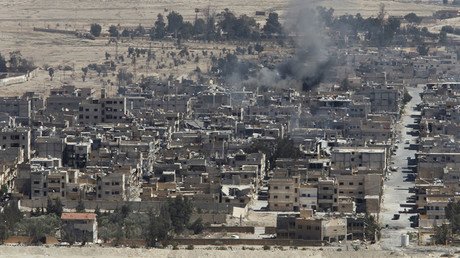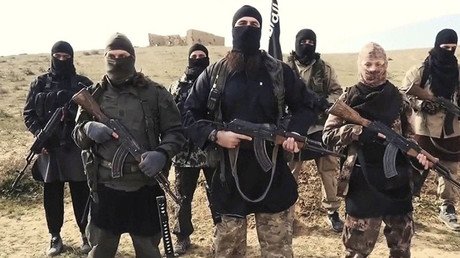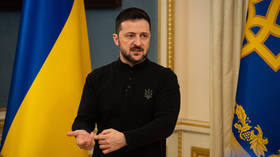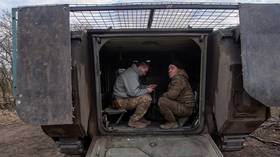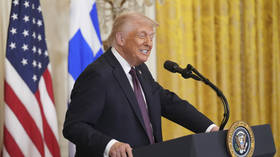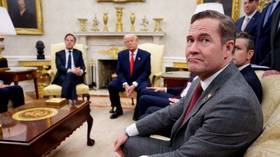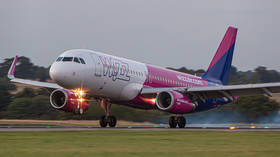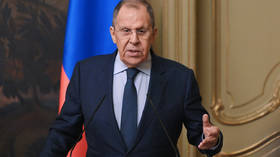It’s now beyond question that prolonged violence in Syria is in Washington’s interest
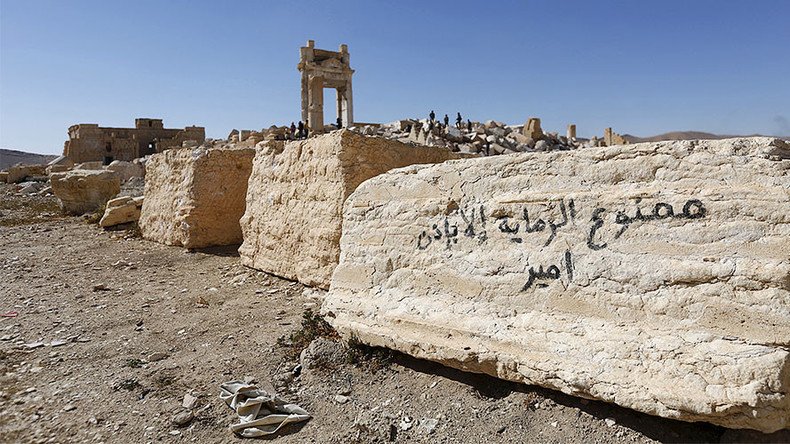
Rare good news from Syria, of the nearing liberation of Aleppo from jihadist Syrian rebels, was overshadowed this week by news that ISIS fighters had recaptured much of the ancient city of Palmyra.
Palmyra had been retaken from ISIS in March during a major offensive by the Syrian army, strongly backed by the Russian air force. How exactly did ISIS get its hands back on the ancient city, and why are there so many indications the US seems intent on keeping the Syrian fires burning?
Time to regroup
There are a couple of reasons it can be deemed legitimate to place a significant portion of the blame for the recapture of Palmyra on the US, although it is clear that with the bulk of its focus on the liberation of Aleppo, Russia also took its eye off Palmyra.
First, consider that there are strong accusations the US was allowing ISIS fighters to flee the Iraqi city of Mosul on the assumption they would be more useful to the US cause of regime change in Syria. Given how much time and effort, and money, the US has spent trying to engineer the fall of Syrian President Bashar Assad, anything that weakens him and his government is in Washington’s favor.
Also being pointed out is that the US, with its super-sophisticated surveillance equipment, didn’t notice 4,000 ISIS fighters advancing on Palmyra. Furthermore, the surprise attack on Palmyra would make you wonder just how much pressure ISIS is being put under by the US in its so-called capital Raqqa if it could afford to send thousands of militants back to the ancient city.
At the same time, maybe worth remembering the reaction in the West and particularly the US when the Syrians and Russians captured Palmyra and drove ISIS out. I wrote at the time that the victory was a blow to the Western narrative on Syria and noted the muted and embarrassed response to the news that the city had been freed with Russian help. Around the same time veteran reporter Robert Fisk wrote in The Independent: “[The Americans] wanted to destroy ISIS, but not that much.”
The fall of Palmyra back into the hands of ISIS will play nicely for the White House which wants to prove that the Syrians and Russians are not in control in Syria. To see it fall back into the hands of terrorists will no doubt elicit some smug smiles in Washington.
By the way, this is the exact reason the Russians have in recent weeks been reluctant to agree to any ceasefires in eastern Aleppo as the rebels continued to lose ground; a pause allows terrorists time to regroup and reenergize, which ultimately causes the fighting to be dragged out over a longer period.
BREAKING: ‘West is telling Russia we went too far in defeating terrorists’ - Assad on Aleppo to RT (EXCLUSIVE) https://t.co/dYJPCVDQZ2
— RT (@RT_com) December 14, 2016
Prolonged fighting in US interests
Coupled with the signs that the fall of Palmyra back into ISIS hands seems to suit the White House, is that Barack Obama last week waived restrictions on military aid for foreign fighters (i.e. “moderate” Syrian rebels), with the White House calling the waiver “essential” to US national security interests. So, this is the Obama administration effectively saying it is in the US’s interests that the fighting continues in Syria.
Not that it did much good, but last year Obama also signed a defense bill which allocated $500 million to arming and training Syrian rebels. This was despite earlier attempts to locate and train “moderate” rebels proved fruitless — perhaps because it becomes rather difficult to determine who the good guys are (or if there are any) when most of them have no problem setting up camp with Al-Qaeda linked groups included the Al-Nusra Front. If the US does continue funneling weapons into Syria on the pretext of fighting terrorism and protecting international and national security it will do nothing but prolong violence; the hope in Washington being that if they keep pushing eventually the Syrian government will fall and can be replaced with some friendlier faces.
By granting the waiver on restricting military aid to Syrian rebels, the US is admitting that it is not in favor to an end to the violence and bloodshed, rather that it would like to see exactly the opposite happen. No amount of bloodshed is apparently too much when regime change is the actual goal.
Interestingly, the news of the terrorist group’s new offensive in Palmyra came first from the ISIS-affiliated Amaq, which was cited by Reuters as a “news agency” without much elaboration or explanation. That’s rather amazing when you compare it to the levels of hysteria reached in the West when it comes to a channel like RT. That RT can be branded evil propaganda while a media apparatus considered to be a mouthpiece for a terrorist organization can be blandly cited as a credible source is surely a little strange.
The statements, views and opinions expressed in this column are solely those of the author and do not necessarily represent those of RT.

